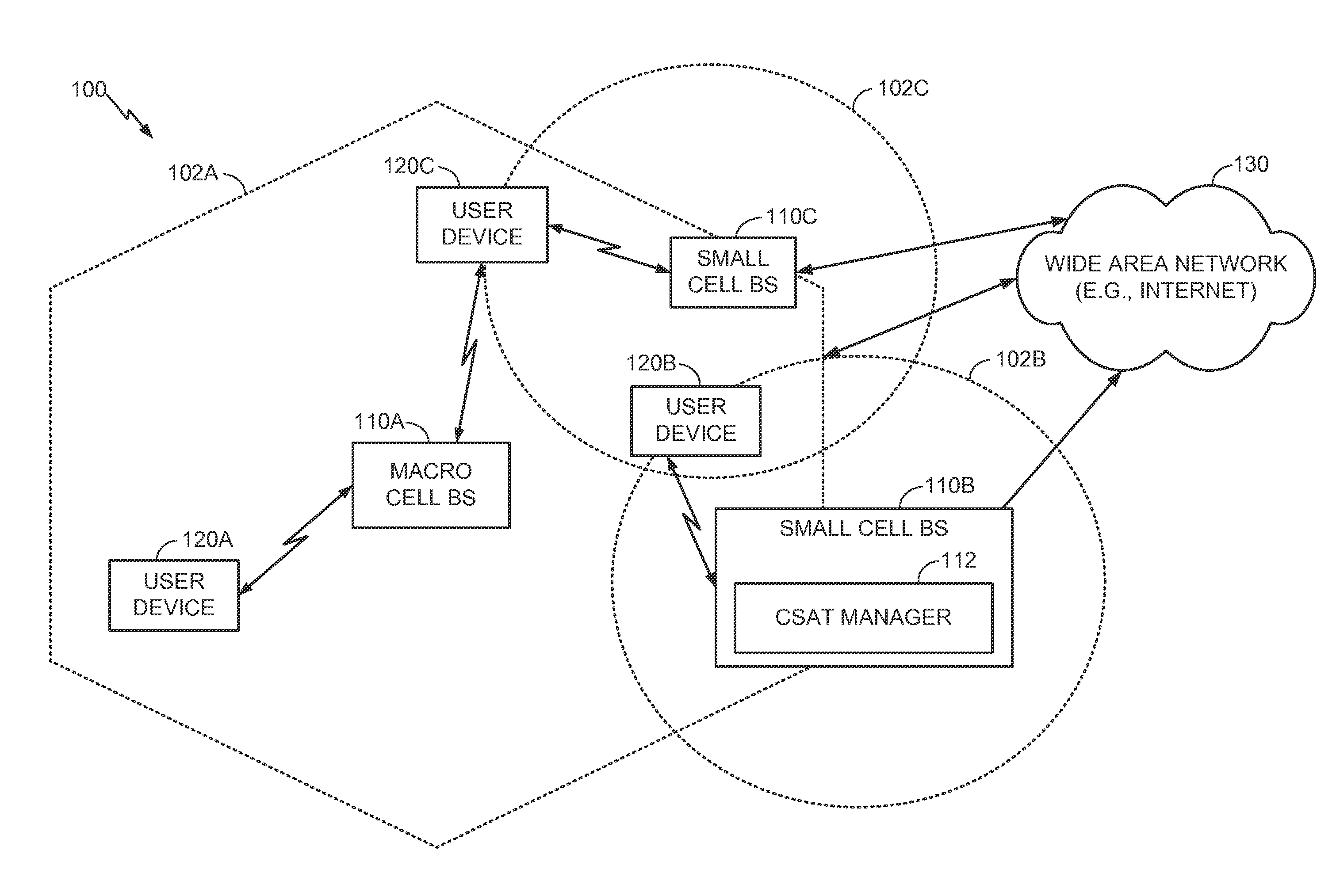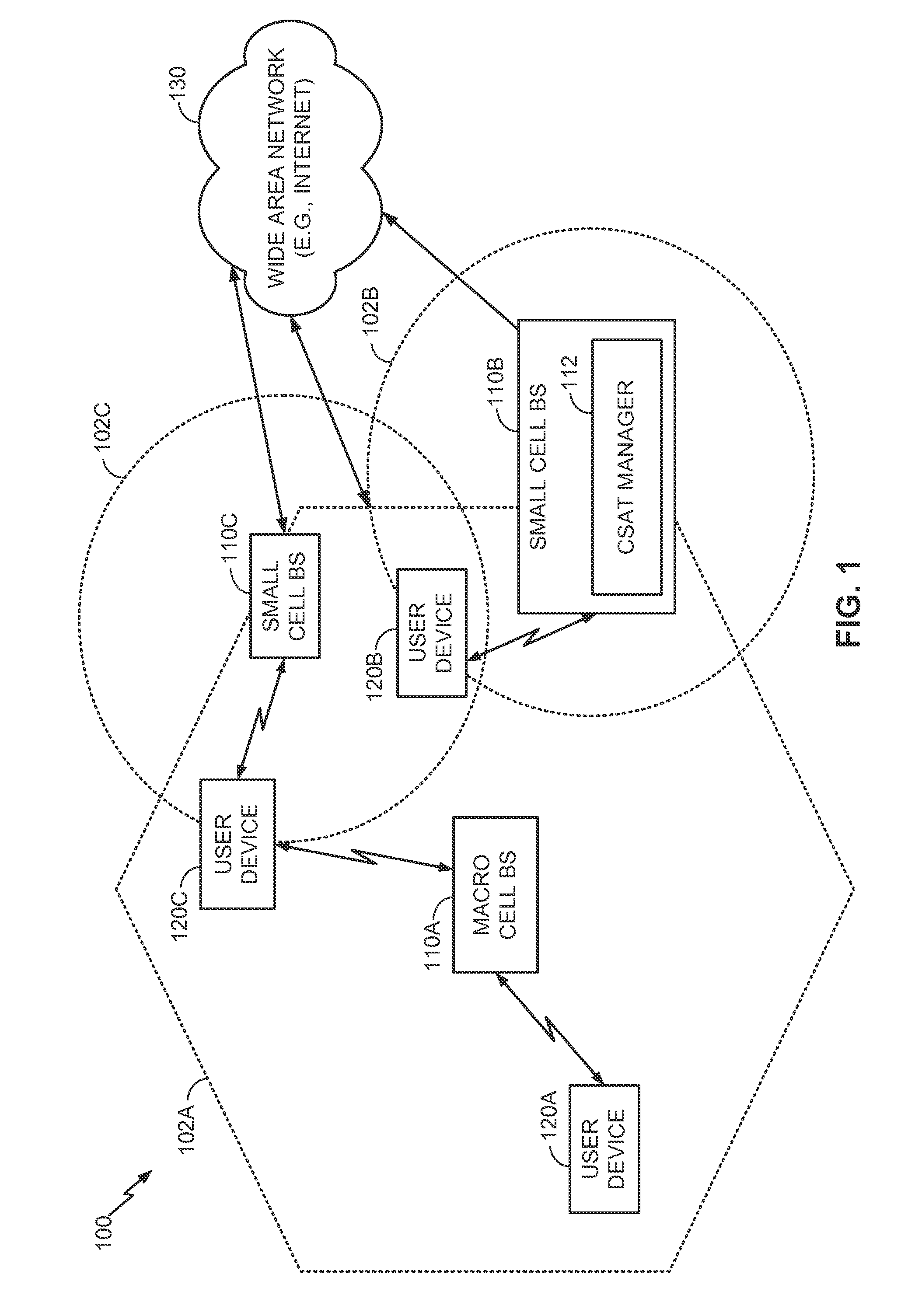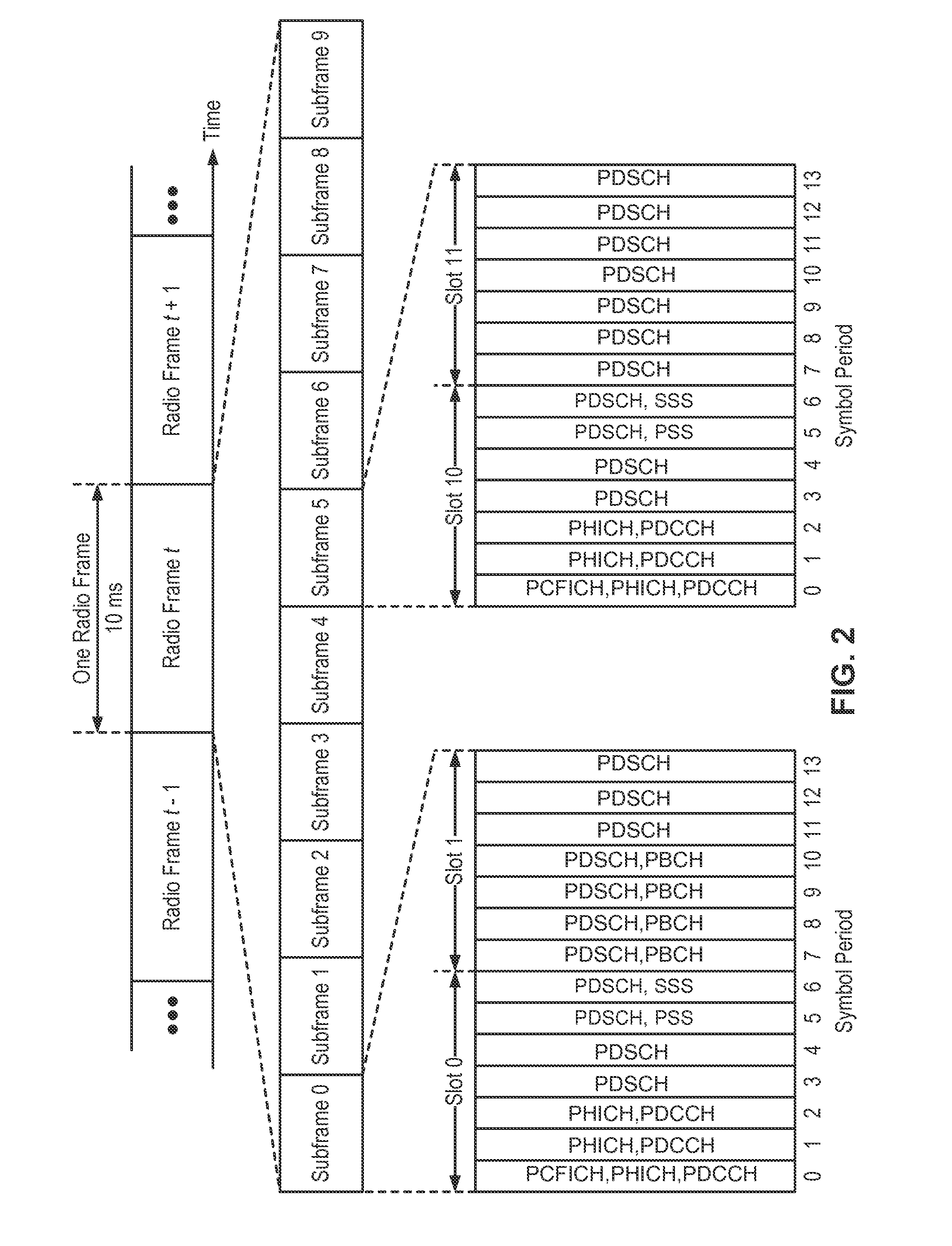Interference classification-based carrier sense adaptive transmission (CSAT) in unlicensed spectrum
- Summary
- Abstract
- Description
- Claims
- Application Information
AI Technical Summary
Benefits of technology
Problems solved by technology
Method used
Image
Examples
Embodiment Construction
[0027]The present disclosure relates generally to interference classification-based Carrier Sense Adaptive Transmission (CSAT) for reducing interference between Radio Access Technologies (RATs) in unlicensed spectrum. One or more CSAT cycling parameters may be adapted or otherwise set based on the identification of a particular interference scenario. For example, different CSAT cycle durations may be employed if an impacted node such as a Wi-Fi device is a neighboring node (e.g., a nearby Wi-Fi access point) or a hidden node (e.g., a more distant Wi-Fi subscriber station).
[0028]More specific aspects of the disclosure are provided in the following description and related drawings directed to various examples provided for illustration purposes. Alternate aspects may be devised without departing from the scope of the disclosure. Additionally, well-known aspects of the disclosure may not be described in detail or may be omitted so as not to obscure more relevant details.
[0029]Those of s...
PUM
 Login to View More
Login to View More Abstract
Description
Claims
Application Information
 Login to View More
Login to View More - R&D
- Intellectual Property
- Life Sciences
- Materials
- Tech Scout
- Unparalleled Data Quality
- Higher Quality Content
- 60% Fewer Hallucinations
Browse by: Latest US Patents, China's latest patents, Technical Efficacy Thesaurus, Application Domain, Technology Topic, Popular Technical Reports.
© 2025 PatSnap. All rights reserved.Legal|Privacy policy|Modern Slavery Act Transparency Statement|Sitemap|About US| Contact US: help@patsnap.com



